
Use Vega to locate the Keystone in Hercules
In late spring, from mid-northern latitudes, you can easily find the brilliant star Vega in the eastern sky at dusk and nightfall. The brilliant blue-white star Vega acts as your guide star to the Keystone, a wedge-shaped pattern of four stars in the constellation Hercules.
Look for the Keystone asterism – star pattern – to the upper right of Vega. Or hold your fist at arm’s length, it’ll easily fit between Vega and the Keystone.
Also, you can locate the Keystone by using Vega in conjunction with the brilliant yellow-orange star Arcturus. The Keystone is found about 1/3 of the way from Vega to Arcturus, the two brightest stars to grace the Northern Hemisphere’s spring and summertime sky. From mid-northern latitudes this time of year, Arcturus is found quite high in the eastern sky at nightfall and evening. Then, by late evening, Arcturus will have moved high overhead.
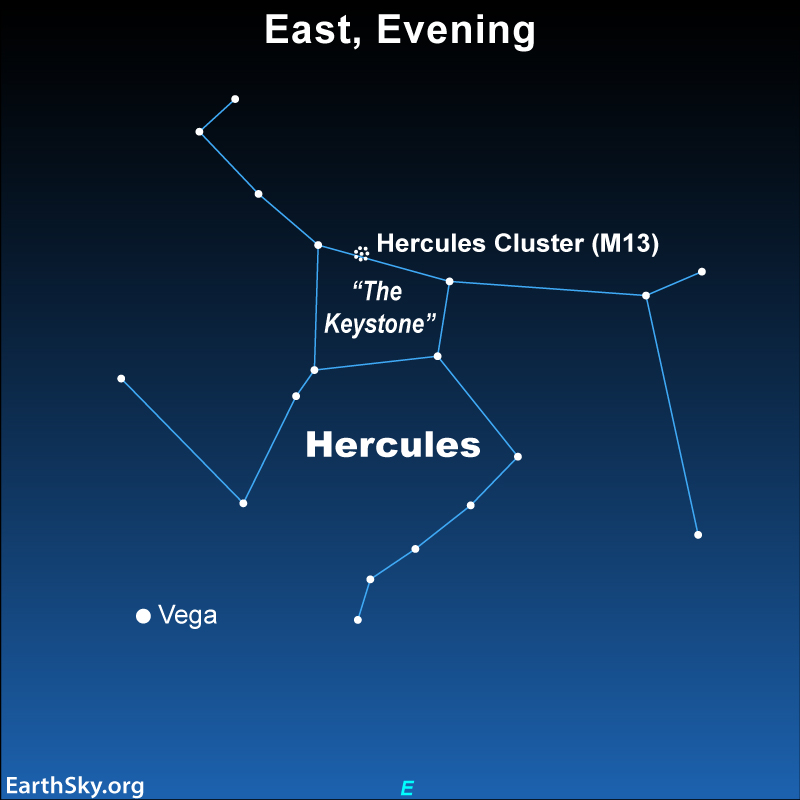
Use the Keystone to find M13
Furthermore, the Keystone is your ticket to find a famous globular star cluster in Hercules, otherwise known as the Hercules cluster, aka Messier 13 or M13.
Most likely, you’ll need binoculars to see the Hercules cluster. Although sharp-eyed people can see it with the unaided eye in a dark, transparent sky. But through binoculars, this cluster looks like a dim smudge or a somewhat fuzzy star. However, a telescope begins to resolve this faint fuzzy object into what it really is, a great big, globe-shaped stellar city populated with hundreds of thousands of stars!
Then, later in the evening, the Keystone and the Hercules cluster swing high overhead after midnight, and are found in the western sky before dawn.
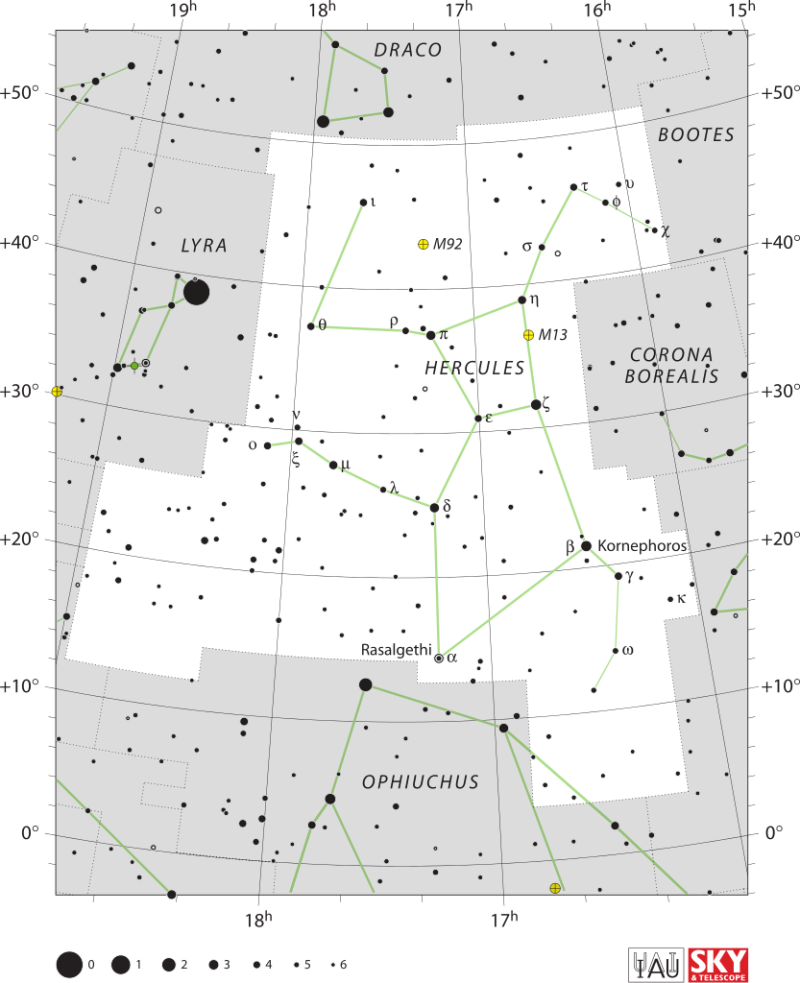
Photos of M13 from EarthSky Community Photos
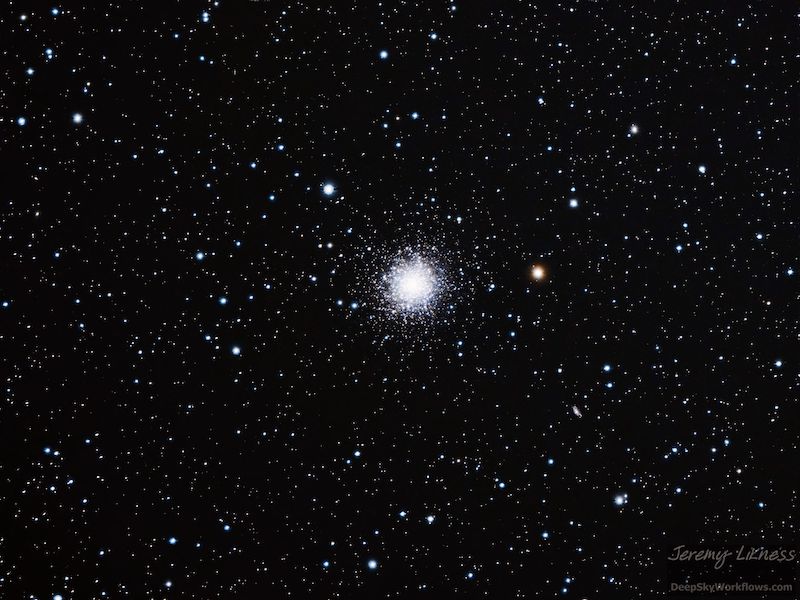
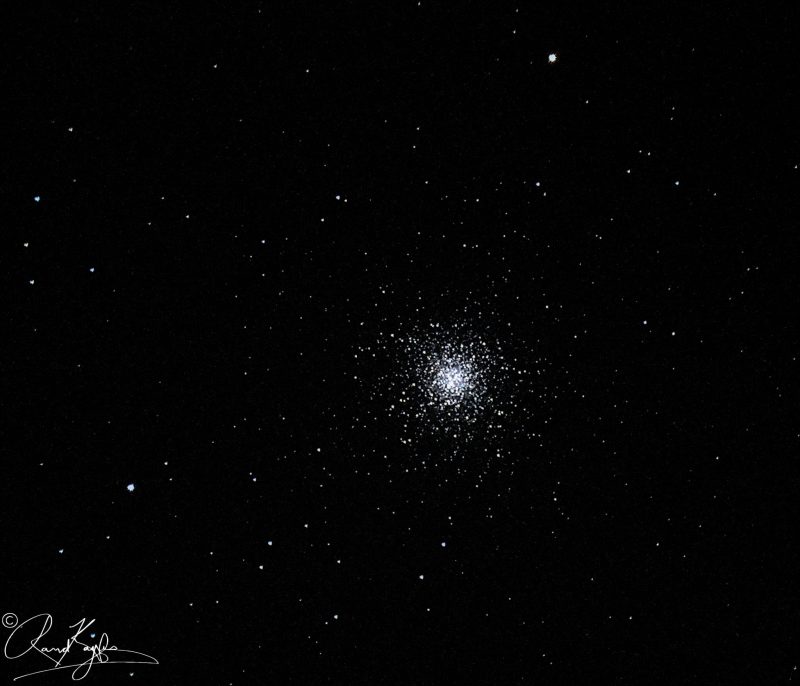
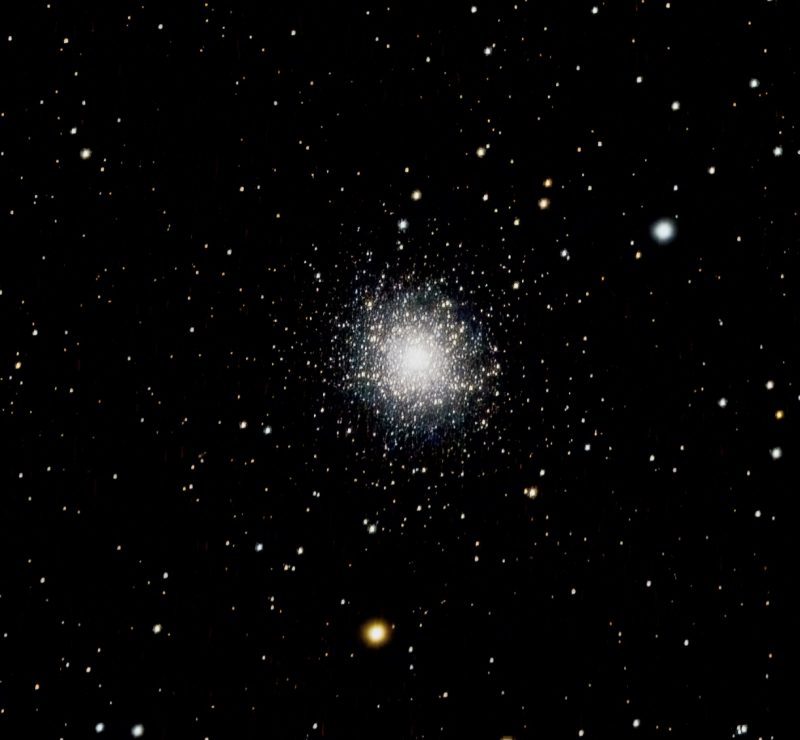
Bottom line: Let the bright star Vega guide you to a famous star pattern in Hercules – called the Keystone – and then to the Hercules cluster, aka M13, a famous globular star cluster.
Enjoying EarthSky so far? Sign up for our free daily newsletter today!
EarthSky astronomy kits are perfect for beginners. Order today from the EarthSky store
The post Find the Keystone in Hercules, and M13 first appeared on EarthSky.
from EarthSky https://ift.tt/6VOLhI5

Use Vega to locate the Keystone in Hercules
In late spring, from mid-northern latitudes, you can easily find the brilliant star Vega in the eastern sky at dusk and nightfall. The brilliant blue-white star Vega acts as your guide star to the Keystone, a wedge-shaped pattern of four stars in the constellation Hercules.
Look for the Keystone asterism – star pattern – to the upper right of Vega. Or hold your fist at arm’s length, it’ll easily fit between Vega and the Keystone.
Also, you can locate the Keystone by using Vega in conjunction with the brilliant yellow-orange star Arcturus. The Keystone is found about 1/3 of the way from Vega to Arcturus, the two brightest stars to grace the Northern Hemisphere’s spring and summertime sky. From mid-northern latitudes this time of year, Arcturus is found quite high in the eastern sky at nightfall and evening. Then, by late evening, Arcturus will have moved high overhead.

Use the Keystone to find M13
Furthermore, the Keystone is your ticket to find a famous globular star cluster in Hercules, otherwise known as the Hercules cluster, aka Messier 13 or M13.
Most likely, you’ll need binoculars to see the Hercules cluster. Although sharp-eyed people can see it with the unaided eye in a dark, transparent sky. But through binoculars, this cluster looks like a dim smudge or a somewhat fuzzy star. However, a telescope begins to resolve this faint fuzzy object into what it really is, a great big, globe-shaped stellar city populated with hundreds of thousands of stars!
Then, later in the evening, the Keystone and the Hercules cluster swing high overhead after midnight, and are found in the western sky before dawn.

Photos of M13 from EarthSky Community Photos



Bottom line: Let the bright star Vega guide you to a famous star pattern in Hercules – called the Keystone – and then to the Hercules cluster, aka M13, a famous globular star cluster.
Enjoying EarthSky so far? Sign up for our free daily newsletter today!
EarthSky astronomy kits are perfect for beginners. Order today from the EarthSky store
The post Find the Keystone in Hercules, and M13 first appeared on EarthSky.
from EarthSky https://ift.tt/6VOLhI5

Aucun commentaire:
Enregistrer un commentaire